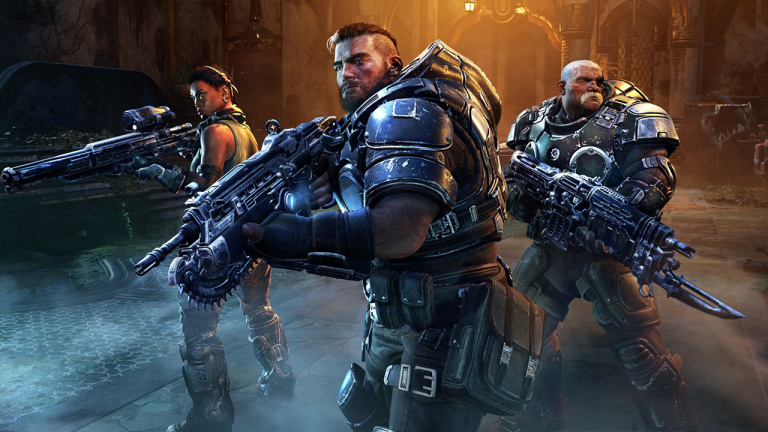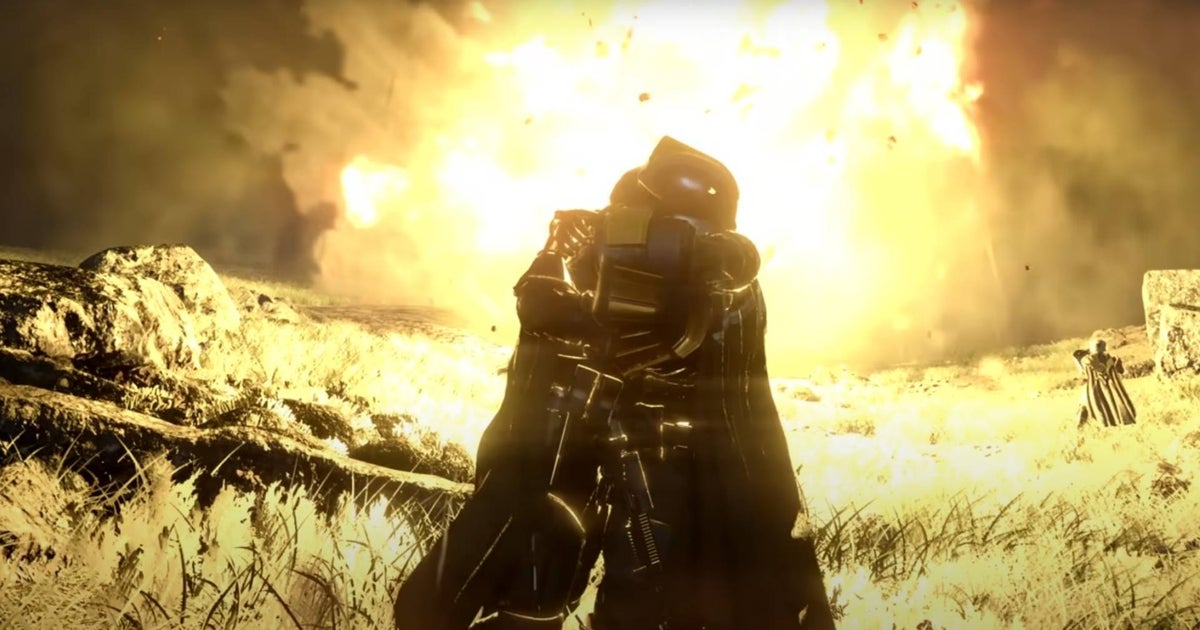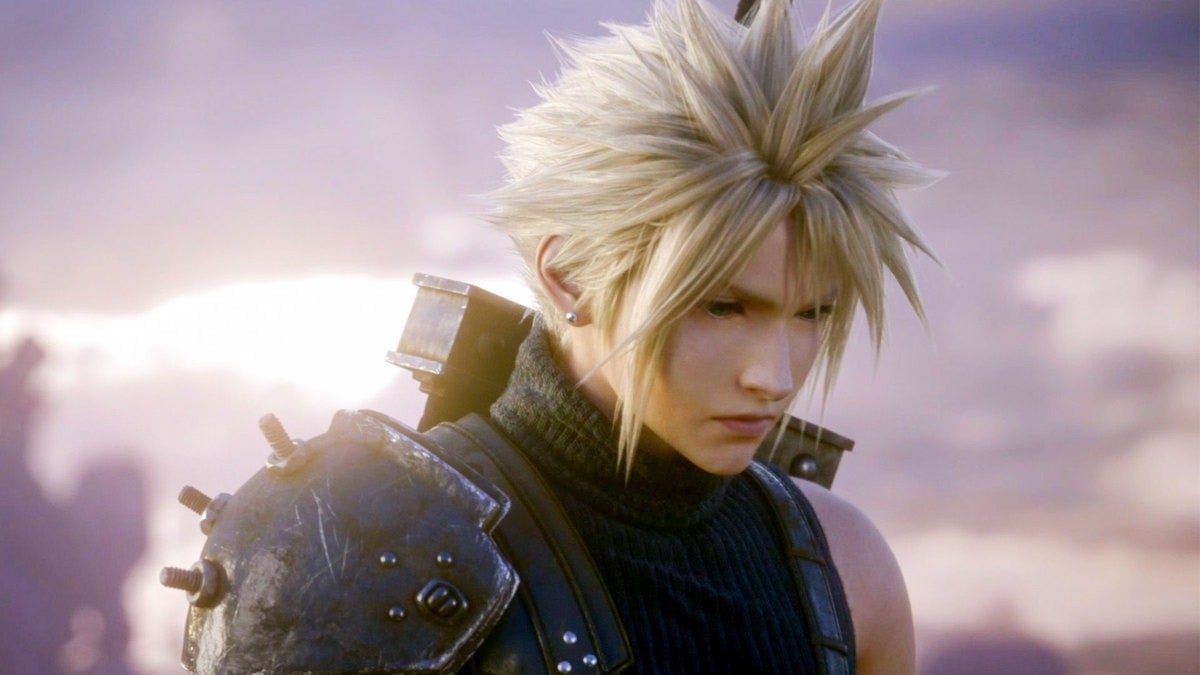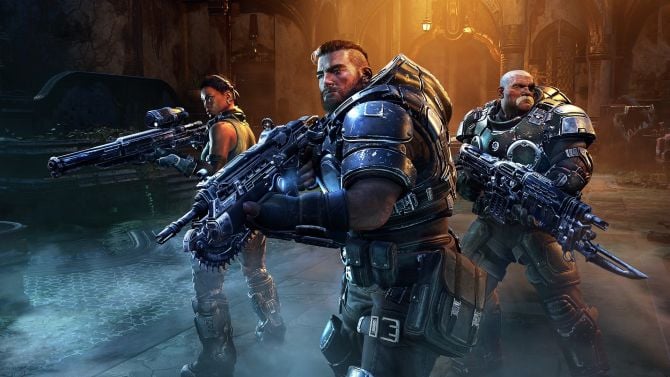The Gears Tactics announcement was surprising. Indeed, the canonical opuses of the saga do not have the reputation of making lace or asking us to dig our brains in search of the optimal movement. Our first contact with this spin-off was very encouraging. Have the Splash Damage and The Coallition teams successfully transposed the codes of this flagship license from Microsoft to strategy games?
Preceding by several years the events of the first Gears of War, Gears Tactics abandons the Delta squad and the new generation that we were able to discover in the 4th opus. We therefore meet Gabe Diaz, father of the heroine of Gears 5, a reclusive mechanic who will have to resume service in the face of the emergence of the Locust. Mandated by Prescott, big boss of the CGU, Gabe is entrusted with the task of putting an end to harm to a new threat, Ukkon. This powerful scientist is the origin of new Locust species and it is only by gathering and training new soldiers that Gabe can hope to overcome the enemy.
Like its predecessors, this Gears is full of archetypes. Gabe "It's not my war, chief" Diaz, Sid “I'm too old for these ******* s” Redburn and Mikayla "We don't really like guys like you around here" Dorn, are therefore the 3 heroes who will carry this mission head on. If the scenario can be followed and digs a little bit into the origin of the emblematic enemies of the saga, it never really takes off, the fault of characters who are thin. It is true that the saga is not famous for the three-dimensional nature of its characters, if we remove the last episode, but each Gear generally has a strong personality and offers its share of punchline over the top. Here, there are few replicas that hit the mark or that offer more than a simple exhibition of events. This is not unacceptable, because the Tactical-RPG is above all a genre that is appreciated by its gameplay, but it does not prevent this cast from appearing pale in front of Marcus Fénix or Cole Train, for example, who failing that to be particularly endearing, knew how to entertain the player with their scathing aftershocks. Unfortunately, it’s not the general softness of the cut-scenes that catches up with the whole narrative. The framing has been agreed and functional and the scenes of conflict lack gigantism. Especially since the Unreal Engine regularly suffers from popping of texture which does not really help the appreciation of these said scenes.
The overhead view suits you so well
These cut-scenes are, however, one of the few technical flaws in this Gears Tactics. Extremely solid visually and well optimized, Tactics does honor to the series. Rarely caught in default, the engine shines constantly and the maps are a pleasure to browse. If the places crossed are relatively few and include their lots of cities in ruins, abandoned battlefields or villages in the middle of the desert, they are sufficiently well designed so that repetitiveness is not felt. The areas affected by the conflicts that we cross in the pouring rain, streaming on the camera, are particularly successful technically and artistically. Tortuous and provided, the architectures directly refer to canonical episodes and are a success both visually and in gameplay. It was obvious, because Gears Tactics cheerfully drew from the artistic assets of its predecessors. It would have been wrong to deprive yourself of it as the result is convincing and ensures visual coherence throughout the saga. 3D models, animations, sfx … Everything is so well implemented that it sometimes feels like watching a multiplayer game of Gears 5 in spectator mode.
Pure juice gears
It’s good to be pretty, but a strategy game is judged above all on its mechanics and the least that can be said is that this newcomer is not stingy with ideas. The basics are crystal clear for anyone who has ever laid their hands on an XCOM or equivalent. Each mission takes place in 2 phases, the Allied phase and the Enemy phase. You have 4 units that you can move and act on a map by spending action points (AP). The skills to which your avatars have access depend on their class and their evolution over the levels that you gain as you succeed. It is therefore up to you to spend each AP judiciously to thwart enemy strategies and to destroy locust troops. Each decision turns out to be crucial, because many parameters must be taken into account with each action. A shot has a more or less percentage chance of hitting its target depending on the weapon used, the angle of view and the distance which separates you from your target. For example, a sniper posted at a height at a distance of 30 meters from the enemy on an open field will be in ideal conditions to stick a ball between his two eyes. We must therefore continually deal with his equipment, the statistics of our hero, the type of enemy we face, the terrain, etc. So much for the starting formula.

Gears Tactics implements the DNA of the license within its game mechanics. Every gameplay feature, weapon and archetype of enemy from the Xbox TPS is at least as well integrated into this Tactical as it was in the original games. The drones take cover and control the lines of sight, the tickers sink on you and avoid your fat bullets at their speed, the grenadiers are formidable in melee and force you to keep your distance, the Kantus reinforce the enemy lines … All these interactions and these combat logics appear as obvious, because we have already encountered them, but in another dynamic of the game.
Better yet, game mechanics inseparable from Gears are used here to minimize player frustration. For example, where in an XCOM the distance traveled per AP spent is fixed, in Gears Tactics this distance is slightly extended to take cover behind the nearest wall. Thus the Gear will perform the traditional tactical slide well known in the saga. Exit, the 2 AP spent instead of one to secure a unit.

The executions on a ground unit for their part, are even more essential to the gameplay of Gears Tactics and are undoubtedly THE big feature that radically changes the confrontations. If a Locust unit of humanoid size sees its life bar drop to zero, the player can therefore execute the target using any of his units to complete it and give 1 additional AP to the 3 other members of his team.
These mechanics therefore leave players longer control which can sometimes double the number of actions they take per turn. At times Gears Tactics seems almost more like a puzzle game than a strategy game, because it is sometimes possible to find the optimal combination of actions to defeat enemy forces in a single turn without taking any damage. These additions therefore make the experience more enjoyable, more accessible too, but above all really different from what some fans of the genre can expect. Even in difficult, the title punctually seems more like a massacre simulation than a real tactical game where a sideways movement can cause death. Especially since automatic backups at each part of a mission are there to save our loaves in case of slippages, as long as the Iron Man option is not checked. To satisfy the player, Gears Tactics offers him dozens of powerful attacking options, even if it means throwing the game a little too far in his favor.

The combat system therefore proves to be particularly efficient and has very well calibrated maps at its service. We have already discussed their visual qualities, but they also prove to be a perfect testing ground for the player. The possibilities of bypassing are legion, the observation points overlooking the action are scattered in the right places, supply crates encourage us to take risks to hope to loot a piece of equipment that will strengthen our build … These missions also respond to the gameplay logic of traditional Gears. Emergency wells to plug with grenades, spawns of enemies parachuted by Reavers … All the main missions are a real pleasure and vary the layouts and strategies to be adopted with flying colors. Unfortunately, the same cannot be said of all “secondary” missions. These missions have secondary only the name, because they are mandatory. Between two operations advancing the story, we have to choose between several missions among which one will be deleted once the required number is reached. These are divided into several types such as point control, unit rescue, etc. They prove to be repetitive, because their structure and their scripts very quickly end up being similar. The Resource Raids are simply unsuccessful, the player must collect pieces of equipment there avoiding enemy bombardments which fall on all the area behind him. To put it simply, these quests ask us to run straight while killing everything it moves. Not really exhilarating. Fortunately, the ratio between main missions and secondary missions is largely bearable.
Gabe “Fashionista” Diaz
Once back from mission and your HQ returned you can open your (free) lootboxes, recruit new units and customize your troops. This is the third point which is the most interesting, because it allows you to largely orient the gameplay of a unit according to your palatability. Each class has its skill tree split into 4 branches promoting various aspects of the gameplay. Generate more AP, healing, invisibility, destabilizing enemies. You are free to orient two units of the same class in different options so that you can face any type of mission. This point, developed jointly with the customization of very advanced weapons, allows you to create your ideal build. For example, a sniper with a cannon increasing his critical strike chance to 100% when at height, who uses an ability making all his AP to unity in the event of a kill could chain several victims in a single turn . There are many possibilities and the number of recruits available allows you to experiment with different styles of play. Most of the parts of our weapon are customizable, sight, breech, handle, magazine, barrel … We can choose the color of our different pieces of armor, to show the helmet or not.
The recruitment of units, on the other hand, seemed fairly optional, except to try to steal pieces of equipment from them. On the one hand because in a good half of the missions you will compose your team of 3 heroes, whose death results in a failure and on the other hand because even in difficult, the option of resurrection and the points of supplies completely nullify its necessity. However, it allows us to take advantage of the inventive nicknames of certain units. Jasper “The Charm” Frank, Dewey “Jalapeño” Harris… This degree of customization can more or less inflate, depending on your interest in the thing, an already very suitable lifespan. Allow 25 hours to complete the adventure. Probably more in the maximum difficulty mode.
The notes
+Good points
- A universe respected to the letter
- All the specifics of Gears perfectly integrated into the T-RPG
- A more aggressive and accessible approach to gender
- A bestiary that works almost better in Tactical than in TPS
- Technically at the top
- A good degree of customization
- Devastating combos and game-changing executions …
–Negative points
- … at the risk of occasionally nullifying the challenge
- Pomegranates, too powerful a miracle solution
- Agreed cut-scenes and a pretext scenario
- Characters below license standards
- Mandatory “secondary” quests that quickly lose interest
- Resource Raids, failed
Gears Tactics does exactly what is expected of it and does it well, very well even. If certain veterans of the genre will surely reproach him for a contained difficulty and a side that sometimes gets too pronounced, he has the merit of proposing a philosophy different from the Tactical-RPG. More aggressive and favoring combos and multitudes of actions per turn, the game system integrates everything that makes the salt of Gears of War (the shoot less). Whether you discover the genre or the license with this episode does not matter as it is suitable in both cases. We will regret a narration and characters a notch below what the saga has accustomed us to, but the battles alone are worth the detour.
Journalist igamesnews.com
April 27, 2020 at 15:00:02
Readers' opinion
Give your opinion on this game!








